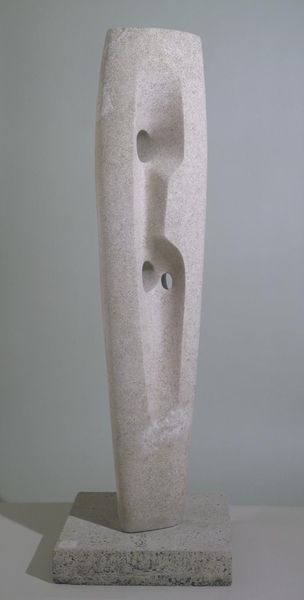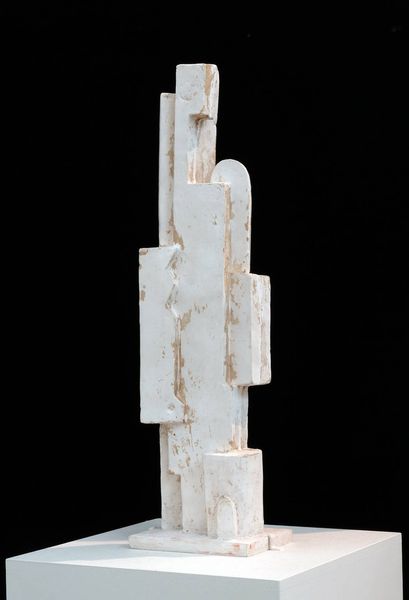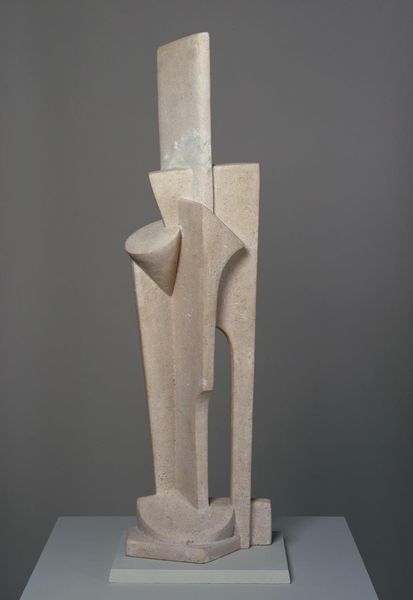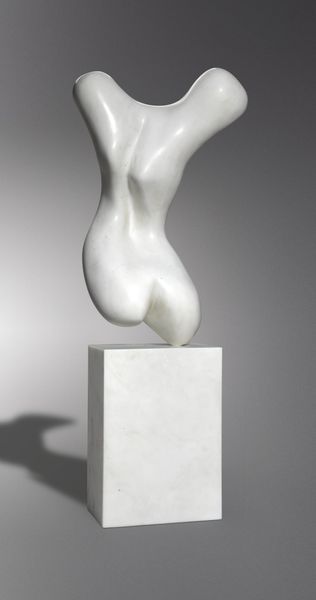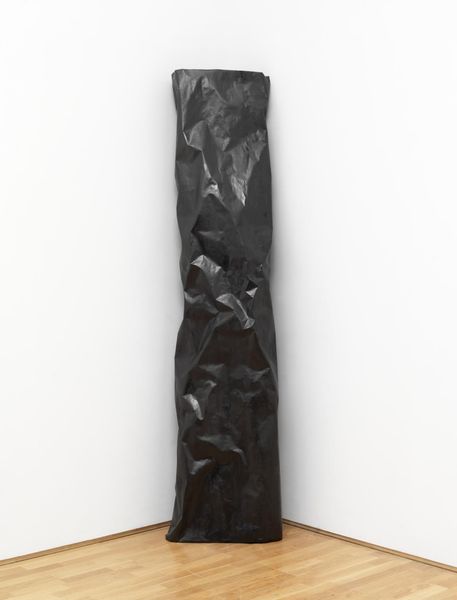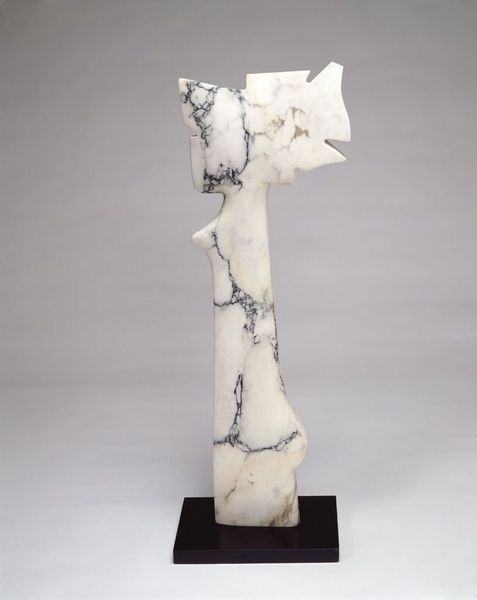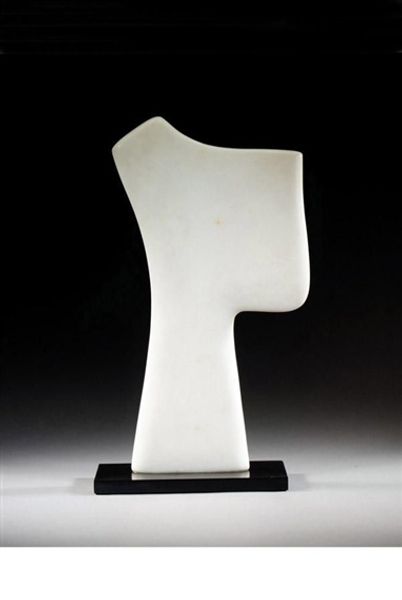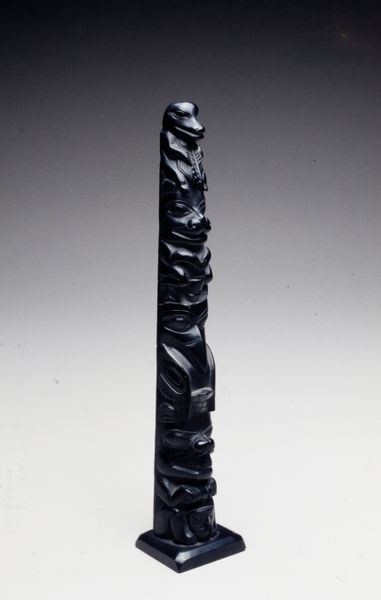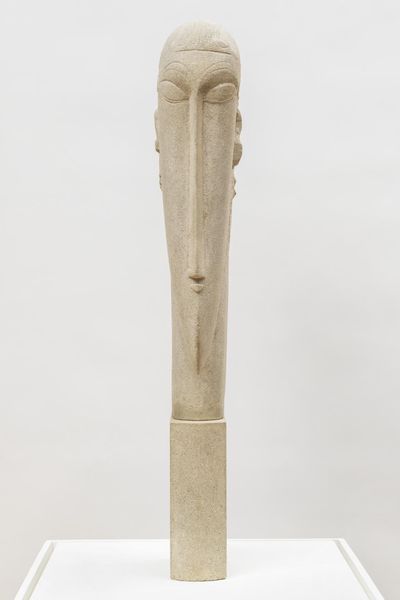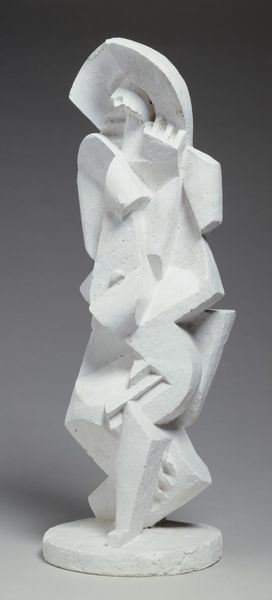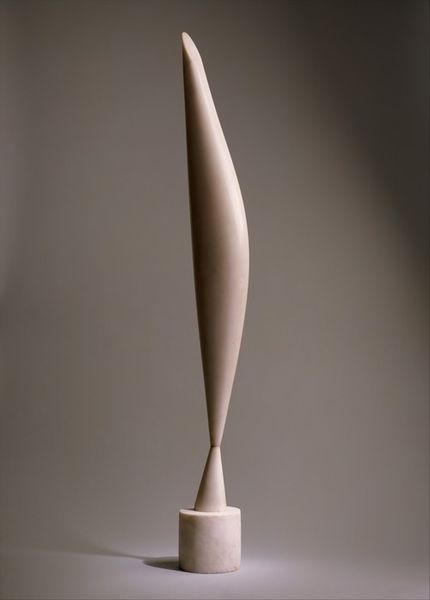
Dimensions: object: 1540 x 320 x 320 mm, 400 kg
Copyright: © The estate of Gilbert Ledward | CC-BY-NC-ND 4.0 DEED, Photo: Tate
Curator: It's so… dreamlike. Like a memory half-formed in stone. Editor: This is Gilbert Ledward's "Monolith," housed here at the Tate. The stone itself weighs 400kg, and stands over 1.5 meters tall. Curator: A giantess emerging, or perhaps sinking, into the earth. There's a sense of the primeval here. Editor: The carving is shallow, like a bas-relief, and the material is worked in such a way to keep it rough and unpolished. I think this speaks to the labor involved, making the artifice evident. Curator: Perhaps she's rising from the material world, ascending to the realm of pure thought? Editor: Or perhaps it’s about the artist’s physical connection to the stone. He's literally unearthing something, revealing form from the earth. Curator: It gives us something to think about, doesn't it? Editor: Yes. The weight of meaning is almost as substantial as the weight of the stone.
Comments
Join the conversation
Join millions of artists and users on Artera today and experience the ultimate creative platform.
tate 6 months ago
⋮
Gilbert Ledward was the son of the sculptor Richard Ledward. He studied at both the Royal College of Art and the Royal Academy Schools and won the first British School of Rome Scholarship in Sculpture in 1913. He served with the Royal Artillery during the First World War and from 1919 on executed many war memorials in towns throughout Britain. The low relief carving on all four sides of this Monolith was inspired by the low relief work of the Italian Renaissance sculptor Agostino di Duccio, particularly his monument to Sigismondo Malatesta in the Cathedral at Rimini. Gallery label, August 2004
